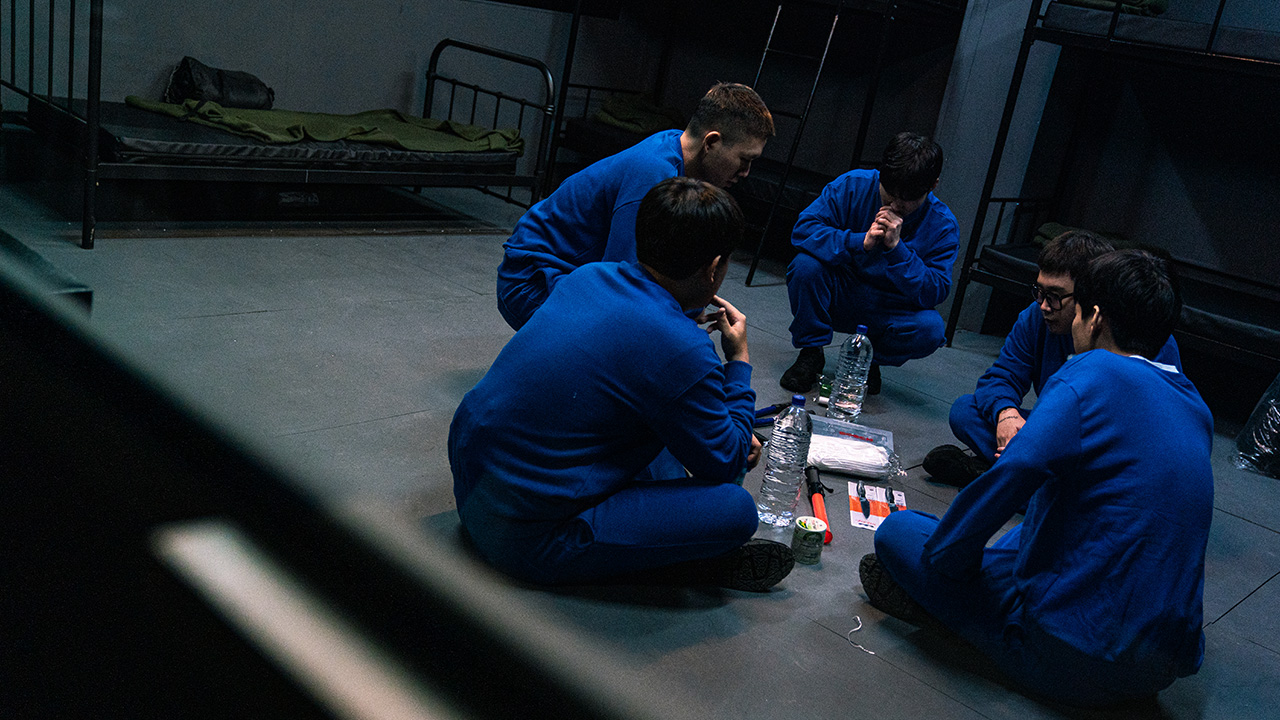Jessie K.M Jeong, vice president and chief operating officer at South Korean cultural export agency KOCCA, looks ahead to the upcoming BCWW event in Seoul and explores trends in the production and distribution of K-content.
How will BCWW 2022 be different from previous editions of the event?
BCWW 2022, unlike its previous edition which was conducted as an online market in 2019 due to the spread of Covid-19, will be organised in an offline format in conjunction with online markets. This year’s event will be attended by 168 local and international content companies as well as 609 buyers from 31 countries.
On its 22nd anniversary, BCWW 2022 aims to provide sustainable and lucrative network and business opportunities for stakeholders involved in the broadcasting industry at both home and abroad under the theme ‘Play the New Content, Dive into the BCWW.’ The event will also feature conferences addressing current trends in the broadcasting industry, presentations on emerging content, IP pitching and various other programmes.
BCWW 2022 will be a foundation for exploring newly emerging content and more effective content businesses that could complement the limits and challenges of online markets.
After two years of Zoom meetings, how important will it be to have BCWW in the real world?
Broadcasting content markets not only serve as commercial platforms for purchasing or selling content but also as social platforms for interactive engagements and networking.

Over the last two years, we have encountered a new normal, thanks to Covid-19, which critically impacted our daily lives. Before Covid -19, an online market functioned as a supplementary tool for an offline market, but this trend has been reversed with the advent of the pandemic.
Although advances in ICT technologies and Covid-19 have brought online markets into the mainstream, having the business all under one roof still plays a vital role in developing interpersonal networks, facilitated by face-to-face encounters.
Furthermore, despite the steady growth in online markets over the last two years, there have been more cons than pros to online-focused markets. The physical interactions and meetings between buyers and sellers are limited, not to mention the loss of liveliness of various screening events and programmes held during the market period.
Nevertheless, the quality of online markets will continue to rise inevitably along with technological advancements. However, online markets cannot be a substitute for face-to-face communication. In fact, it is highly unlikely that the innate human nature for building interpersonal relationships through decades of face-to-face interaction will change so easily.

What has KOCCA been doing to help Korean companies during the past two years?
KOCCA has been striving to support domestic producers and platform providers that have been negatively affected by Covid-19, specifically in the areas of planning/creation, production and distribution.
For the planning and creation elements, KOCCA strengthened its support on planning and development by helping to uncover original IP that can lead to actual production.
In production, KOCCA expanded its investment in content exponentially to further reinforce Korea’s original programming following the success of Netflix’s Kingdom and Squid Game.
In particular, as the planning/creation (IP development) is becoming far more important in the global content production and distribution market, much of our support was made on this component, which led to successful outcomes.

Lastly, on distribution, KOCCA implemented a support system that reflects the recent shift in the global distribution channels to an online format. In addition, KOCCA provided generous cross-sectoral support for all stages of post-production, from planning to production, as post-production is now a critical component.
How has the Korean production and distribution market changed in recent years?
As global and local OTT platforms such as Netflix, Wavve, TVING and Seezn begin to expand their business, there have been significant changes to the structures of the Korean production and distribution market. Unlike times when terrestrial and cable TV broadcasters dominated market share, we are now witnessing much flexibility on content in terms of genre, subject, length and numbers of episodes, expression, intensity and other things.
As a result, new content in new genres has emerged, such as Squid Game, Hellbound and All of Us Are Dead, dealing with zombies and monstrous creatures. In addition, OTT platform providers are now outcompeting the legacy media such as terrestrial and cable TV broadcasters in content distribution as well. Content distribution is also changing in that new Korean content is being released simultaneously through various global OTT platforms instead of being released through local broadcasting companies.

What data can you share regarding exports of K-content in recent years?
From 2017 to 2020, the export of content by Korean broadcasting operators increased by 19.8% on an annual average, reaching US$491.54m in 2020. The majority of these exports are currently completed broadcast programmes but this portion is decreasing as the export of formats and other types of production – such as video clips or promotional videos – is on the rise.
In 2020, drama and entertainment claimed the largest portion of domestic broadcast programming exported in 2020 (US$355.11m) with drama being the dominant genre by a significant margin.
The export of finished Korean drama increased by 10% from 2017 to 2020, reaching US$274.65m in 2020. However, the export of terrestrial TV dramas stalled in the same period, which means that the increase is mainly due to exports of drama by programme providers (PP) in the pay TV sector.

In 2020, Asia (53.2%) was the biggest market for domestic broadcasting programmes from Korea, with Japan (22.6%) being the number one market among Asian countries. For the export of finished work by PP, the US accounts for 37.5%. Such figure may indicate that the US market share can grow larger than that of Asia (42.7%) in the near future. It was also observed that 68.7% of domestic broadcasting programmes in 2020 were distributed by internet-based providers including OTT services.
How has the switch to streaming changed the Korean broadcast and cable industries?
In Korea, broadcasting and streaming have become interdependent media. For instance, Korean OTT platform Wavve provides content from three major terrestrial broadcasters (KBS, MBC and SBS) and TVING covers content from tvN and JTBC, which are cable TV companies. Hence, this means that content is first released on terrestrial and cable TV channels and then on respective OTT platforms after a short delay.
Meanwhile, global OTT platforms also purchase licences from Korean terrestrial and cable TV companies to make available the content on their platforms, due to rising popularity and demand for Korean dramas, including melodrama, romance, comedy and historical drama. For instance, Extraordinary Attorney Woo, a recent Korean drama on cable channel ENA, proved that even a traditional form of media can be successful if equipped with competitive and attractive content. This also demonstrates that a single drama can make a newly launched cable TV channel a success.

What trends do you see in the global market for K-content?
First, TV series Squid Game, Hellbound and All of Us Are Dead all became hits by combining Korean contexts with genres and subjects already familiar to global audience, such as zombies, monsters and dystopian worlds. All of these series are based on Korean webtoons and web novels and the production of such content suggests this trend will continue.
Second, TV series similar to Our Blues, My Liberation Notes and Extraordinary Attorney Woo – which reflect typical Korean contexts appealing to emotions such as melodrama and romance – are also expected to be produced more following the success of those shows.
Third, new Korean entertainment formats such as King of Mask Singer, I Can See Your Voice and Exchange will be in the spotlight as well.

What should Korean content companies be doing to get ahead of those trends?
More efforts are needed for planning and developing diverse content. The efforts include discovering and dramatising domestic and international original webtoons and web novels as well as searching and training new writers. At the same time, new content must be planned and produced that can appeal to global audience while capturing Korea’s traditional strengths and specialties.
What new initiatives has KOCCA got planned for the future?
KOCCA plans to expand its support for new content production that can be serviced through Korean OTT platforms. Moreover, we will continue to support the planning, development and production of shortform and midform content exclusively designed for digital media.
In addition, KOCCA will continue to support and invest in developing new entertainment formats and creating new content incorporating AR, VR and AI technologies to expand audiovisual experiences.
Please can you share some highlights of the new Korean shows launching at BCWW?
Five broadcasters will present new content during the Premiere Showcase at BCWW 2022. Reborn Rich, a coproduction between Raemongraein and SLL Studio starring Song Joongki and Shin Hyunbeen, is the most anticipated drama, followed by political drama Trolley from SBS, historical drama The Forbidden Marriage from MBC and popular weekend drama Three Bold Siblings from KBS.
CJ ENM will present Exchange 2, a dating reality show in which couples who have gone through break-ups reunite in one place, reminisce about their past relationships and find new love. The first season gained global popularity and there are plans to produce the format around the world.
Extraordinary Attorney Woo, the latest drama phenomenon from South Korea, has transformed the fortunes of a local TV channel and is set to wow audiences at Mipcom.
Having spent the summer firmly planted in the global top 10 of Netflix’s most watched non-English-language originals, Extraordinary Attorney Woo has lived up to its name since launching on ENA in South Korea in June.
The series has delivered the Skylife-owned satellite channel’s highest ever ratings, transforming its fortunes overnight since it debuted. Extraordinary Attorney Woo is also the seventh highest-rated drama in Korean cable television history and the sixth highest-rated TV drama by the number of viewers, with a final episode that pulled in almost 4.5 million viewers in August.
Starring Park Eun-bin, the show follows a rookie female attorney with autism spectrum disorder who is hired by a major law firm in Seoul. Being different from her neurotypical peers, her manner of communication is seen by them as odd, awkward and blunt. However, with each legal case and through her intelligence and photographic memory, she becomes an increasingly competent attorney.
READ MORE
Do Hyoung Lee, general director of broadcasting at Korean cultural agency Kocca, explains the ongoing demand for South Korean content while introducing 18 new shows to the international buying community.
South Korean drama has been a global phenomenon for many years now, with wave after wave of hit shows spreading out from Asia and reaching the US and Europe in recent years.
But things have certainly moved on from the good old days of Winter Sonata, the KBS hit that put Korean drama on the global map almost 20 years ago. Things have changed even from the more recent crossover hits like The Good Doctor, another KBS show from 2013 that was successfully adapted for ABC in the US in 2017 and travelled the globe.
Since then, the streaming boom – both within South Korea and internationally – has changed the landscape for Korean drama in a number of ways. Over to Do Hyoung Lee, general director of broadcasting at South Korean cultural agency Kocca, to explain how.
“The popularity of Korean drama has continued globally this year, just as it did in 2020,” he says. “As competition has been getting more fierce among domestic and foreign online streaming services, such as Netflix, Disney+, Wavve and TVing, demand for Korean drama has increased and there has been more investment in production. This trend has stimulated the diversity of Korean drama.”
READ MORE
South Korean content has been selling around the world for a long while but last year saw a boost in demand, according to Kocca’s Do Hyoung Lee, who talks us through the content export agency’s 21-title playlist on C21’s Digital Screenings.
It’s no secret that South Korean dramas and formats are hot property and have been for some time now. Scripted shows like The Good Doctor (from Korean public broadcaster KBS) and entertainment formats such as The Masked Singer (MBC) and I Can See Your Voice (CJ ENM) have travelled to all corners of the globe in recent years, either in their original form or as IP for local production.
Do Hyoung Lee, general director at the broadcasting division of the South Korean government’s Korea Creative Content Agency (Kocca), says the origins of the K-format boom can be traced back to 11 years ago.
“Korean formats started to get noticed in China in early 2010 and have since seen remarkable achievements in the global market,” he says. “Following the success of The Good Doctor and The Masked Singer, another K-entertainment show called I Can See Your Voice broadcast in the US on Fox and became the most watched programme among those on air in that time period.
READ MORE
South Korean governmental agency Korea Creative Content Agency (KOCCA), which oversees and coordinates the promotion of the Korean content industry, is this week showcasing new content from the country via C21 Digital Screenings, while general director Dohyoung Lee gives his analysis of the international boom in K-content.
Exports of South Korean television content have been on a steady upward curve ever since the early days of the Korean Wave almost 20 years ago, when dramas like KBS2’s 2002 hit Winter Sonata made such an impact on the global market.
Fast forward to today and more of the world is watching even more K-content. Just look at some of the biggest US shows in recent years. ABC’s adaptation of another KBS2 series, The Good Doctor, was the only global hit coming out of the 2017/18 season in the US. And on the unscripted side, the global success of talent show The Masked Singer has been a phenomenon over the past two years, following its debut on Fox in the US in 2019.
Dohyoung Lee, general director at the Broadcasting Division of KOCCA, is certain these two recent K-content hits have driven demand for more programming from South Korea.
READ MORE